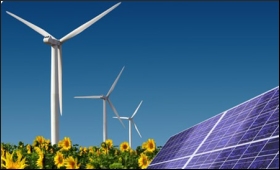|
|
|

|
'Conducive policies required for growth of altnernate energy'
|
|

|
|
| Top Stories |
 |
|
|
|
SME Times News Bureau | 26 Jan, 2021
The Centre needs to provide a conducive policy environment to encourage
the private sector's participation in the alternate energy segment to
support the sector's growth, said Karanraj Chaudri, Advisor, Social
Impact Investments at United Nations Development Programme (UNDP) for
India and South-Asia.
"To achieve the government's target of 450
GW of renewable resources and alternative energy by 2030, it must
encourage private sector participation by creating a conducive policy
environment and by offering incentives," he said.
Currently,
India's installed renewable energy capacity stands at 87.26 Giga Watt
(GW), which includes 34.81 GW of solar, 37.74 GW of wind, 9.86 GW of
biomass and 4.68 GW of small hydro.
The Centre has estimated an
investment of $100 billion over the next three years to achieve
renewable energy capacity of 175 GW by 2022.
During the Covid-19
induced lockdown, India's power sector witnessed a major drop in power
demand. This had an adverse impact, particularly, on the distribution
sector, which is already reeling under mounting debt and operational
issues.
The year 2020, however, proved to be a decisive and
progressive year for clean energy in India. Bids for new solar projects
hit a record high last year, affirming that coal is no longer the
cheapest source of electricity.
Chaudri also laid focus on access
to reliable energy. The SDG Investor Map by UNDP India and Invest India
also identified alternative and renewable energy as a key area for
sustainable growth of the country.
The Advisor for Social Impact
Investments also said that there is a need for India's power
distribution companies to improve the power quality in the country. The
relationship between energy efficiency and electricity access has been
under-explored in India, he added.
|
|
|
| |
|
|
|
|
|
|
|
|
|
|
|
|
|
|
| |
| Customs Exchange Rates |
| Currency |
Import |
Export |
US Dollar
|
₹91.25
|
₹89.55 |
UK Pound
|
₹122.85
|
₹118.85 |
Euro
|
₹107.95
|
₹104.3 |
| Japanese
Yen |
₹59 |
₹57.1 |
| As on 29 Dec, 2025 |
|
|
| Daily Poll |
 |
 |
| What is your biggest hurdle to scaling right now? |
|
|
|
|
|
| Commented Stories |
 |
|
|
|
|
|
| |
|